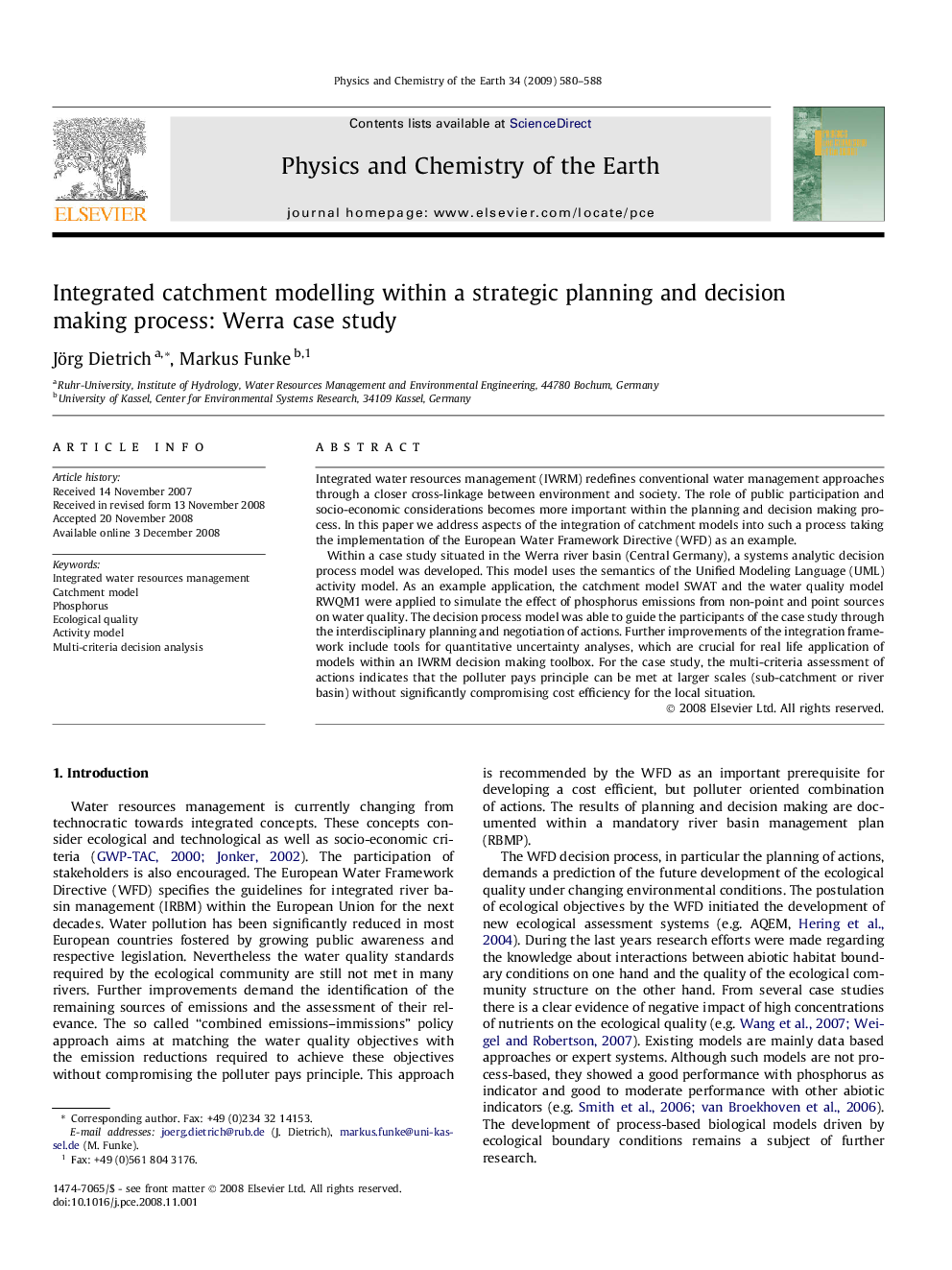| Article ID | Journal | Published Year | Pages | File Type |
|---|---|---|---|---|
| 4721497 | Physics and Chemistry of the Earth, Parts A/B/C | 2009 | 9 Pages |
Integrated water resources management (IWRM) redefines conventional water management approaches through a closer cross-linkage between environment and society. The role of public participation and socio-economic considerations becomes more important within the planning and decision making process. In this paper we address aspects of the integration of catchment models into such a process taking the implementation of the European Water Framework Directive (WFD) as an example.Within a case study situated in the Werra river basin (Central Germany), a systems analytic decision process model was developed. This model uses the semantics of the Unified Modeling Language (UML) activity model. As an example application, the catchment model SWAT and the water quality model RWQM1 were applied to simulate the effect of phosphorus emissions from non-point and point sources on water quality. The decision process model was able to guide the participants of the case study through the interdisciplinary planning and negotiation of actions. Further improvements of the integration framework include tools for quantitative uncertainty analyses, which are crucial for real life application of models within an IWRM decision making toolbox. For the case study, the multi-criteria assessment of actions indicates that the polluter pays principle can be met at larger scales (sub-catchment or river basin) without significantly compromising cost efficiency for the local situation.
